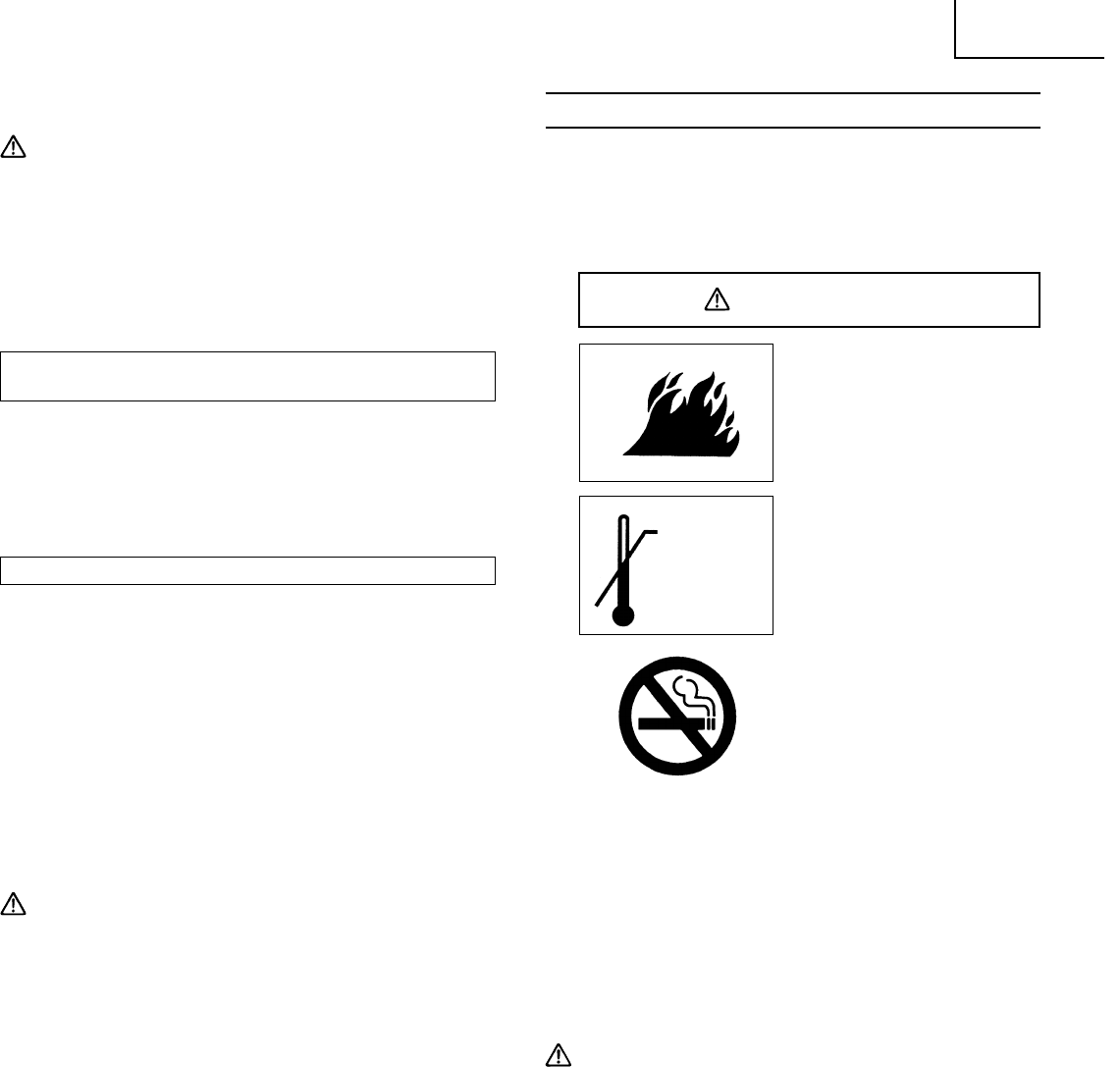
— 13 —
English
4. Disconnect battery charger from the receptacle.
CAUTION
Do not pull the plug out of the receptacle by
pulling on the cord.
Make sure to grasp the plug when removing from
receptacle to avoid damaging cord.
5. Remove the battery from the battery charger.
Supporting the battery charger with hand, pull out the
battery from the battery charger.
Regarding electric discharge in case of new
batteries, etc.
As the internal chemical substance of new batteries and
batteries that have not been used for an extended period
is not activated, the electric discharge might be low when
using them the first and second time. This is a temporary
phenomenon, and normal time required for recharging
will be restored by recharging the batteries 2 – 3 times.
How to make the batteries perform longer.
⅜ Recharge the batteries before they become completely
exhausted.
When you feel that the power of the tool becomes
weaker, stop using the tool and recharge its battery. If
you continue to use the tool and exhaust the electric
current, the battery may be damaged and its life will
become shorter.
⅜ Avoid recharging at high temperatures.
A rechargeable battery will be hot immediately after
use. If such a battery is recharged immediately after
use, its internal chemical substance will deteriorate,
and the battery life will be shortened. Leave the battery
and recharge it after it has cooled for a while.
CAUTION
ⅷ When the battery charger has been continuosly
used, the battery charger will be heated, thus
constituting the cause of the failures. Once the
charging has been completed, give 15 minutes
rest until the next charging.
ⅷ If the battery is recharged when it is warm due to
battery use or exposure to sunlight, the pilot lamp
may not light.
The battery will not be recharged. In such a case,
let the battery cool before charging.
ⅷ If the battery charger does not work while the
battery is mounted correctly, it is probable that
the battery or charger is malfunctioning. Take it to
your authorized Service Center.
BEFORE OPERATION
Read section titled “SAFETY” (pages 4 – 9).
Make sure of the followings before operation.
WORKING ENVIRONMENT
WARNING
ⅷ No flammable gas, liquid
or other flammable
objects at worksite.
ⅷ Use outside or well–
ventilated areas.
Do not inhale.
ⅷ Keep the Nailer, fuel cell
and battery away from
sunshine and from
temperature exceeding
120°F (50°C).
ⅷ Keep away from ignition
sources. No smoking.
ⅷ Clear the area of children
or unauthorized
personnel.
COLD WEATHER CARE
⅜ Do not store the Nailer, fuel cell and battery in a cold
weather environment. Keep the Nailer, fuel cell and
battery in a warm area until beginning the work.
⅜ If the Nailer, fuel cell and battery are already cold,
bring it in a warm area and allow the Nailer to warm
up before use. Observe temperature limit of max. 120°F
(50°C).
Do not expose to an open flame and sparks!
CAUTION
ⅷ This Nailer may not drive completely below when;
at low temperature fuel cell loose the required
propellant force, at high temperature fuel cell
overdose.
ⅷ Do not use the Nailer in the rain or where
excessive moisture is present.
ⅷ This Nailer is not recommended for use at
altitudes above 5,000 feet (1,500 m), or in
temperature below 30°F (0°C).
120°F MAX
(50°C)
01Eng_NR90GC2_US 4/13/07, 10:4813


















